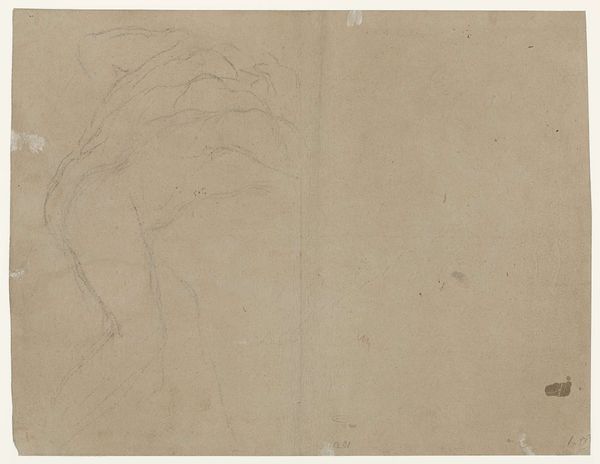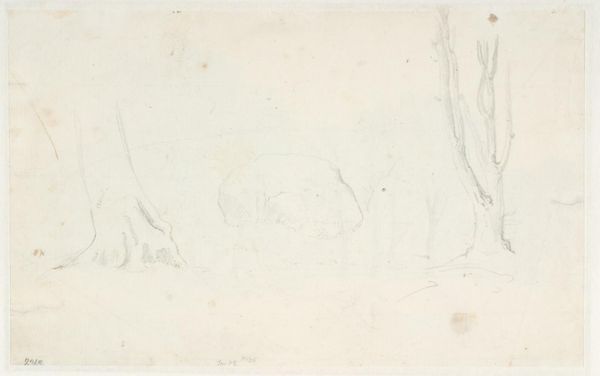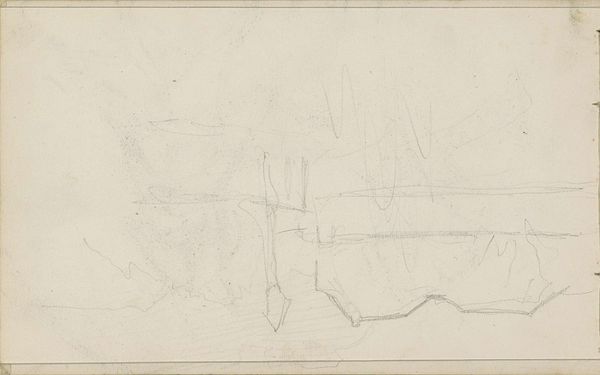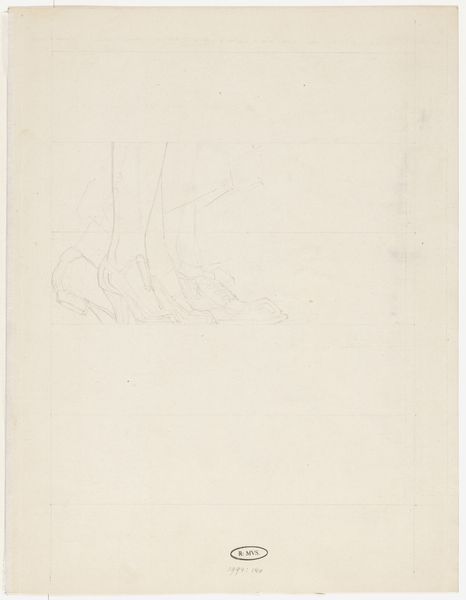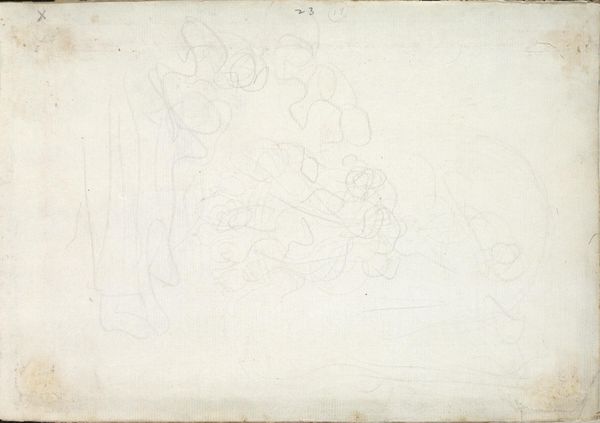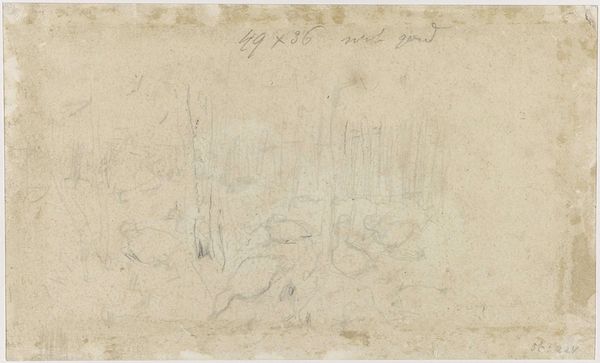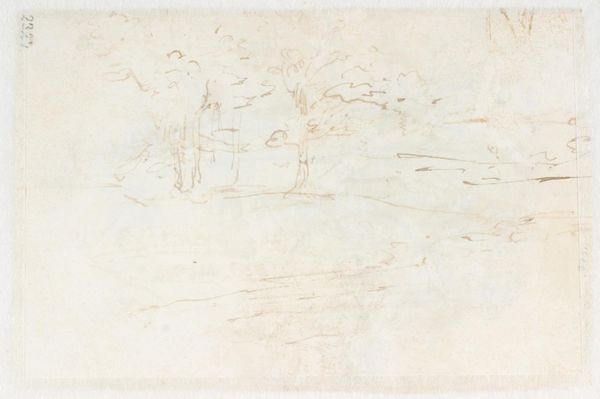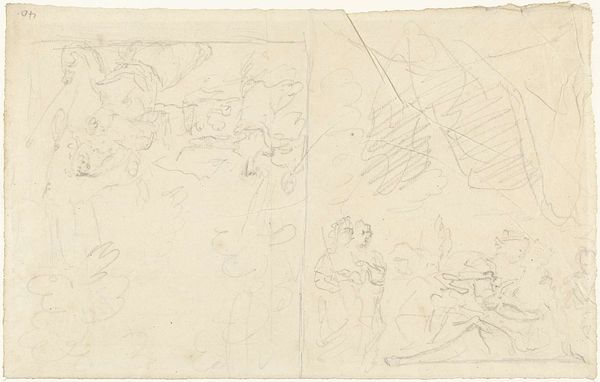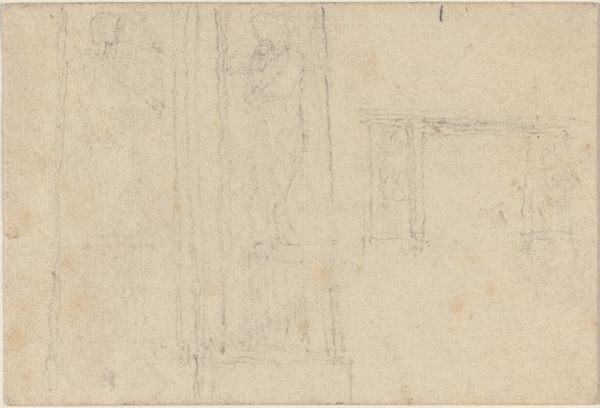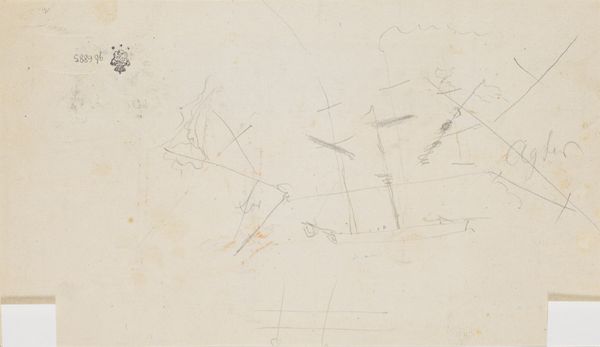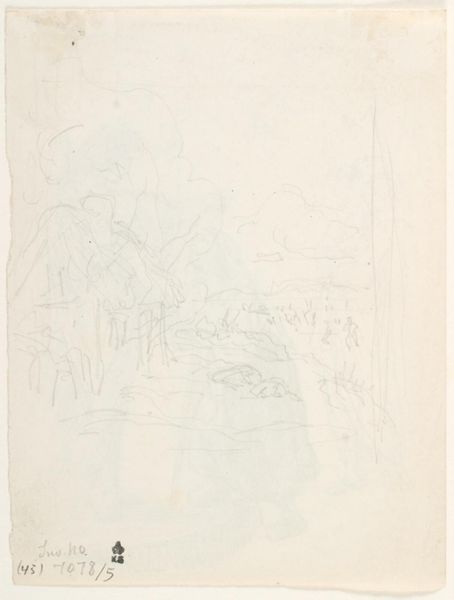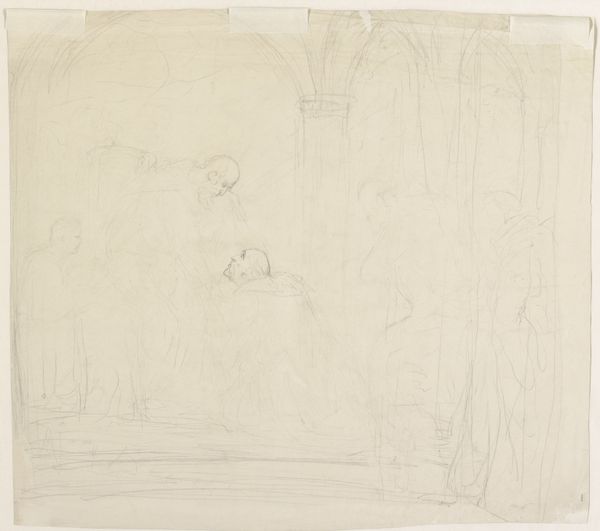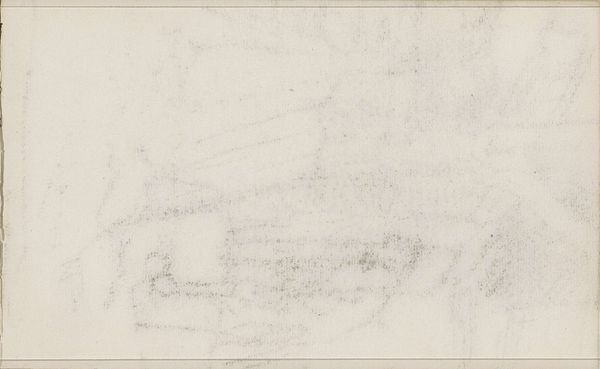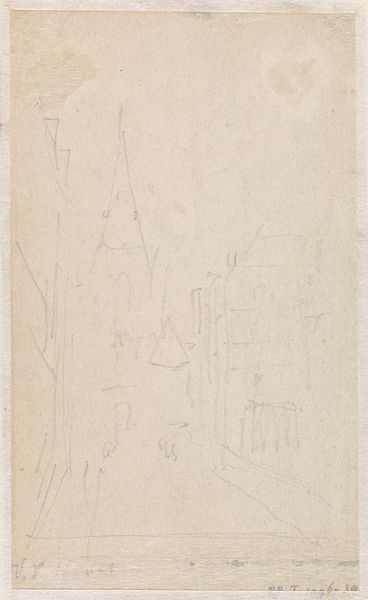
drawing, paper, pencil
#
drawing
#
16_19th-century
#
landscape
#
paper
#
pencil
#
realism
Dimensions: height 167 mm, width 255 mm
Copyright: Rijks Museum: Open Domain
Curator: Welcome. Here we have Jozef Israëls’s "Schets van bomen," or "Sketch of Trees," potentially from 1869. It’s a pencil drawing on paper. What are your initial thoughts? Editor: It feels very sparse. Almost ghostly, like a memory fading on the page. The bare trees and undefined forms certainly give it an ethereal quality. Curator: Right. Looking at it from a material perspective, the very choice of pencil and paper tells a story. It’s economical, portable; ideal for sketching en plein air. Israëls was likely capturing a transient moment in the landscape. This would also be a relatively inexpensive mode of image production at the time. Editor: And the lines themselves! They seem to suggest not just trees, but also a certain somber mood often found in woodland scenes, resonating, perhaps, with themes of loneliness or introspection we find during the late 19th century, but also a more ancient understanding of woodlands as liminal places. Curator: Interesting! Because, from my view, that aligns with Israëls’s connection to the Hague School, part of a larger movement pushing for realism, but rooted in daily life. One of their concerns involved conveying the difficult lives of Dutch workers and laborers in the face of industrialization. Inexpensive drawings could also contribute to a democratic effort to distribute and propagate artwork during a tumultuous period for workers. Editor: Yes, and trees themselves can often serve as symbols of endurance or even defiance. Although vague here, their persistence perhaps subtly comments on society. Curator: We are viewing it in the Rijksmuseum now, but it feels as if it was composed as ephemera that happened to have stuck around. If Israëls' goal had been something beyond selling discrete works to private buyers, how might that change how we treat these materials as valuable artifacts? Editor: Ultimately, whether the intent was artistic, functional, or some combination of both, these symbols and images invite deeper consideration, enriching our cultural memory. Curator: Agreed, there is something quietly subversive in making art about trees with the cheapest supplies one can find. It certainly demands more careful scrutiny.
Comments
No comments
Be the first to comment and join the conversation on the ultimate creative platform.
